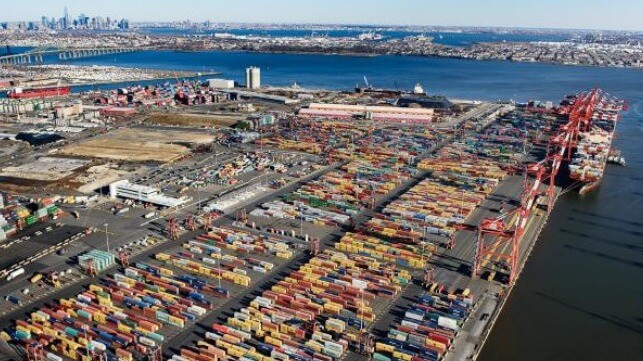Drewey: Congestion and Delays Likely as Ports Handle Baltimore Diversions

While U.S. East Coast ports have been quick to respond to the suspension of vessel traffic to Baltimore, respected maritime industry researcher and advisor Drewry warns of the likelihood of congestion and delays. Based on its most recent Port Throughput Forecast, Drewry highlights handling diverted Baltimore containers and other cargo ranging from vehicles to bulk and even passengers, as well as anticipated 2024 market growth, may prove challenging to U.S. East Coast ports.
Many of the ports Drewry writes in its analysis are at “reasonably high utilization rates.” Many U.S. East Coast ports were already handling strong increases in volume as well as rebounding from the sluggishness in some market segments in 2023. Drewry’s Port Throughput Forecast along with its market commentary highlights projections for North American volumes growing at 10.6 percent for 2024.
Baltimore’s location makes it the nearest coastal, deepwater port with access to the Midwest and the heart of the U.S. agricultural community as well as a key mid-Atlantic access point. It is well known that for 13 straight years, Baltimore has been the busiest RoRo port in the United States for cars and light trucks.
In addition to vehicles, the Port of Baltimore however also handled more than 11 million tons of general cargo in 2023. The U.S. Energy Information Agency in a report yesterday highlighted its role in key bulk cargos including coal, asphalt, and urea ammonium nitrate fertilizers. The port also handles more than one million TEU and is approaching a half million passengers a year.
“This cargo will naturally divert to the most appropriate neighboring ports, ranging from the Hampton Roads ports in the south to New York/New Jersey ports in the north,” writes Drewry.
For container traffic, Drewry highlights the primary gateway in the northeastern United States is the Port of NYNJ, which they calculate already accounts for 59 percent of the regional throughput. Second is the Hampton Roads terminal (primarily Norfolk International Terminal and Virginia International Gateway) which accounts for 25 percent of the throughput. Philadelphia handles about 6 percent of the throughput with the remainder distributed between smaller ports in the northeast. On top of that, these ports will now have to absorb Baltimore’s shares which is about 9 percent of regional throughput according to Drewry.
Drewry calculates total terminal utilization in the area is estimated to have been 60 percent in 2023 with just a 5.5 percent increase in terminal capacity. The softening of the markets last year they estimate eased throughput in 2023 by roughly 13 percent, but notably they highlight Baltimore’s Seagrit Marine Terminal handled 800,000 TEU. Seagrit is blocked by the collapsed Key Bridge.
Maryland Governor Wes Moore and U.S. Transportation Secretary Pete Buttigieg have been in close contact with all parts of the port and shipping community. Today, Moore highlighted that TradePoint Atlantic, which is outside the obstructions, “immediately began mobilizing to accept some cargo shipments from vessels that were bound for the Port of Baltimore.”
“Removing Baltimore’s capacity, allocating its container volume across NY/NJ, Philadelphia, and Hampton Roads terminals and including the forecast growth for the market, 2024 average utilization rates could reach as high as 79 percent. Terminals operating at this level for a sustained period are likely to experience congestion, even more so if the increase in utilization occurs over a short time period,” warns Drewry.
They report that average pre-berth waiting times in Baltimore and New York have “only very recently come under control,” dropping to an average in February of 0.2 days, but could easily begin to rise. Further, for the Hampton Roads terminals, which in 2023 were dealing with the highest utilization in the area, the average pre-berth waiting time already remains elevated at 0.5 days according to Drewry.
Virginia has already offered and is expected to absorb some key parts of Baltimore’s diverted traffic including coal where it is already the business port in the nation. Carnival Cruise Line and now Royal Caribbean International are also diverting their cruise ships to Norfolk, Virginia adding to vessel traffic to the port.
Yesterday, the Governors of New York and New Jersey, Kathy Hochul and Phil Murphy, issued a statement reporting that had “directed the Port Authority of New York and New Jersey to further evaluate all available resources to minimize supply chain disruptions.” The Governors said their joint port can and will take on additional cargo to “support our neighbors in Baltimore and consumers nationwide.” New York and New Jersey are confident that they can handle added volumes to overcome the potential impact on the national and global supply chains by the indefinite close of the Port of Baltimore.
